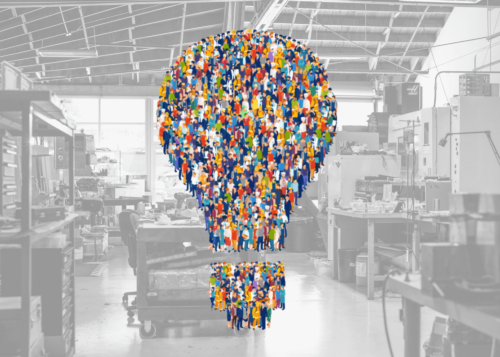How Do We Create More Diversity in Manufacturing?
Hello, reader—Brian Kippen here, owner and founder of KAD. Welcome to another installment of our new series, The Future of Manufacturing, wherein I share the problems we face in the manufacturing industry and what solutions KAD is testing. My goal is to make this series a collaborative process, and I would love to hear your thoughts on these topics. Drop me a line so we can connect and work to reinvigorate the manufacturing industry together.
How do we create more diversity in manufacturing?
That’s one of the biggest questions that today’s industry leaders must address.
It’s a question that, for me, leads to a few concrete answers but many more questions:
- Is there a way someone is “supposed to be” in a precision machine shop?
- Are shops proactive enough about being welcoming and inclusive?
- How can we show a 19-year-old woman who doesn’t want to go to college that manufacturing is the right career for her?
- What are some ways that we can encourage diversity of thought, approach, and experience in addition to diversifying the demographic makeup of our workforce?
While I don’t have all the answers, I am certain of one thing: the manufacturing industry has a representation problem that must be overcome before we can make meaningful progress.
Lack of Representation Leads to Lack of Relatability
If you can see yourself in somebody else, you can see yourself doing what they do.
This premise is at the core of every tear-jerking commercial showing little kids watching Olympians and imitating their moves in the living room. When we feel represented in a sport—or an industry—we inevitably feel more connected to it. More importantly, we start believing that we belong in those spaces, too.
How often have you talked with someone about jobs in manufacturing only to have them reveal misconceptions about our industry being dark, dirty, and dangerous? How many times have you heard someone say a manufacturing job isn’t a good fit for them? In my experience, these exchanges are pretty common.
I wonder if it’s because when these folks walk into a facility, they don’t see themselves in the people currently on the shop floor. For more people to visualize themselves in manufacturing jobs, shop owners have to start building more diverse teams.
Diversity Inspires Innovation and Creativity
Attracting talent isn’t the only reason diversity matters in manufacturing. Another significant advantage of fostering a diverse team is that different people think—well—differently.
KAD may be a prototype machining company, but we’re really in the business of solving problems. Our clients come to us because we consistently provide creative solutions to their manufacturing challenges. And we do that by listening to our team members’ various ideas and perspectives, never hesitating to dig deeper and ask, “Why?”
“Why?” is a great question. It forces evaluation and creates an opportunity for thoughtful analysis and improvement. Yet this question has historically been shunned in manufacturing.
When newcomers in the industry ask, “Why do you do it this way?” or “Why not try another method?” they’re often hit with the same tired response: “Because that’s how it’s always been done.”
I think it’s time to retire that response once and for all. Diversifying our workforce requires open-mindedness to different ideas and opinions that, in turn, lead to growth, creativity, and innovation.
If shop owners can embrace a culture of curiosity and welcome “Why?” into their facilities, they’ll benefit from employees offering unique perspectives and innovative solutions—and so will their clients.
Break the Hiring Mold to Diversify the Workforce
Embracing the idea of a diverse workplace and getting comfortable with the “Why?” questions that follow are only the first steps toward meaningful change. Next—and most importantly—shop owners must practice what they preach and actually hire a diverse team.
Some shops might say, “We want to hire more women.” But if they only green-light applications from men out of habit, they’ll never achieve their goal. There must be a deliberate push to break the mold and hire people who wouldn’t always have “fit in.”
Look, I know there’s comfort in the familiar, but growth comes from change.
Here’s the major mental hurdle that precision machine shop owners need to embrace: diversity in and of itself means that not everyone will “fit in” or “fit together” perfectly at work—and that’s okay. We must accept that fact if we want a diverse workforce (and successful businesses).
It will take work—costing time and money to identify areas of improvement and actionable strategies to hire a more diverse team. But I believe the return will be well worth the investment.
What are your thoughts on diversifying the manufacturing workforce? Get in touch! I’d love to hear your insights and learn about how you’re diversifying your shop.



